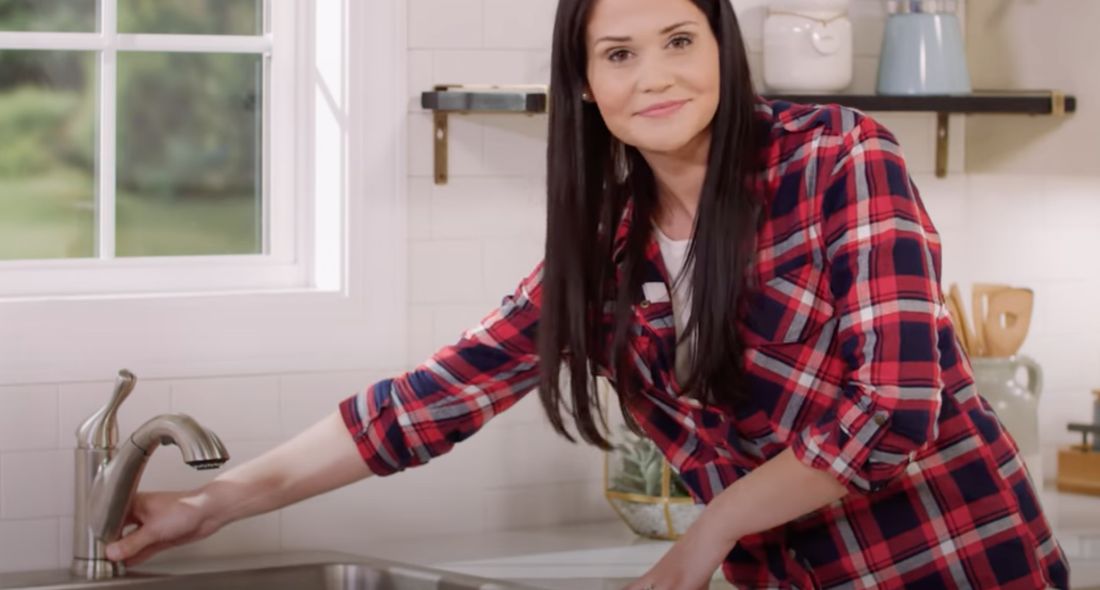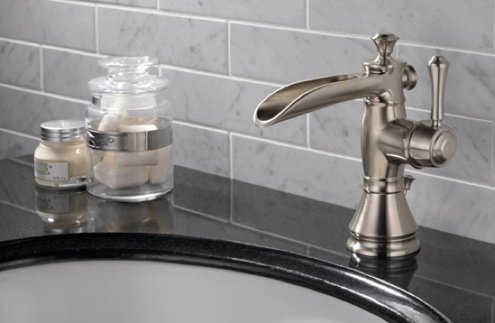Understanding the Relevance of Repairing a Malfunctioning Faucet
Understanding the Relevance of Repairing a Malfunctioning Faucet
Blog Article
In this article on the next paragraphs you can discover a lot of good quality information and facts concerning Why Are My Faucets Dripping (And Can I Fix It Myself)?.

Dripping taps might feel like a minor trouble, but their influence goes beyond simply the inconvenience of the noise. From drainage to sustaining unnecessary monetary prices and health and wellness dangers, ignoring a dripping tap can bring about various repercussions. In this short article, we'll look into why it's crucial to resolve this usual household issue immediately and successfully.
Wastage of Water
Ecological Impact
Leaking taps add significantly to water wastefulness. According to the Epa (EPA), a solitary faucet dripping at one drip per secondly can waste greater than 3,000 gallons of water annually. This not only pressures water resources but also influences ecological communities and wildlife based on them.
Financial Prices
Increased Water Bills
Beyond the ecological effect, leaking taps can blow up water costs substantially. The built up waste gradually equates into higher utility expenses, which can have been stayed clear of with prompt repair services.
Prospective Residential Property Damages
Moreover, long term trickling can bring about harm to fixtures and surfaces bordering the faucet. Water buildup can create staining, corrosion, and also architectural issues if left unattended, causing extra repair prices.
Health and wellness Worries
Mold And Mildew and Mildew Development
The constant presence of moisture from a trickling tap develops an optimal setting for mold and mildew development. These fungis not only endanger indoor air top quality yet also posture wellness risks, particularly for individuals with breathing conditions or allergies.
Waterborne Diseases
Stagnant water in dripping faucets can become a breeding place for microorganisms and various other pathogens, boosting the threat of waterborne diseases. Contaminants such as Legionella bacteria flourish in stagnant water, potentially causing significant ailments when consumed or breathed in.
Do it yourself vs. Specialist Fixing
Pros and Cons of Do It Yourself Fixing
While some might attempt to fix a dripping tap themselves, DIY repair work come with their very own set of challenges. Without appropriate knowledge and devices, DIY efforts can worsen the issue or bring about incomplete fixings, extending the problem.
Benefits of Working With an Expert Plumber
Employing a specialist plumber guarantees that the underlying source of the dripping tap is addressed efficiently. Plumbing professionals possess the experience and equipment to identify and repair tap concerns efficiently, conserving time and decreasing the threat of further damage.
Step-by-Step Guide to Repairing a Dripping Faucet
Devices Needed
Prior to trying to take care of a leaking tap, gather the required tools, including an adjustable wrench, screwdrivers, replacement components (such as washing machines or cartridges), and plumber's tape.
Usual Tap Issues and Their Solutions
Determine the type of tap and the certain concern creating the drip. Typical issues include damaged washers, corroded valve seats, or defective O-rings. Refer to manufacturer guidelines or online tutorials for step-by-step advice on repair work.
Safety nets
Normal Maintenance Tips
To prevent leaking taps, execute regular maintenance such as cleaning aerators, examining for leaks, and replacing damaged components promptly. Additionally, consider installing water-saving devices or upgrading to more reliable fixtures.
Relevance of Prompt Repairs
Attending to dripping faucets as soon as they're observed protects against further water wastage and possible damages, inevitably saving both water and money in the long run.
Impact on Building Worth
Assumption of Well-Maintained Property
Maintaining a home in good condition, including dealing with maintenance concerns like dripping taps, improves its viewed value and worth amongst prospective buyers or lessees.
Impact on Resale Value
Properties with properly maintained plumbing fixtures, consisting of faucets, command higher resale worths in the realty market. Resolving leaking taps can contribute to a favorable impression throughout residential or commercial property examinations and negotiations.
Environmental Responsibility
Individual Contribution to Preservation
Taking obligation for taking care of leaking faucets lines up with wider efforts towards water conservation and ecological sustainability. Every individual's activities collectively make a significant effect on preserving priceless sources.
Sustainable Living Practices
By focusing on timely repair services and adopting water-saving behaviors, people contribute to sustainable living practices that profit both present and future generations.
Conclusion
Addressing a trickling faucet goes beyond plain comfort; it's an important action towards conserving water, minimizing economic costs, and protecting health and building. Whether through DIY repair work or expert help, doing something about it to deal with trickling taps is a tiny yet impactful means to advertise accountable stewardship of sources and add to a much healthier, extra lasting future.
How to Fix a Dripping or Leaky Faucet
A leaking faucet is one of the most common problems that homeowners encounter, but it being commonplace doesn’t make it any less annoying. The constant drip drip drip of a leaking bathtub faucet, showerhead, or sink tap can disturb your home’s serenity. Left neglected, a dripping faucet can also result in higher water bills and discoloration or mold growth in your sink or plumbing fixtures.
Fortunately, you don’t have to be a trained plumber to know how to stop a dripping faucet. With some basic tools, replacement parts, and a little patience, leaky faucet repair is a breeze. In this article, we’ll explain what causes dripping faucets and how you can fix them.
What Causes a Leaking Faucet?
Kitchen and bathroom faucets come in all manner of designs, but most involve some combination of valves, O-rings, seals, and washers. The O-ring is usually the weakest link, but any one of these pieces can wear down over time. Heat, moisture, temperature fluctuations, minerals, mold, and movement can contribute to warping and corrosion, breaking the watertight seal. This just comes with the territory of being a homeowner. Everything is always subject to wear and tear, and some component parts of your appliances and fixtures need to be replaced on occasion. At least replacement O-rings are cheap!
More rarely, dripping faucets can be a symptom of excessively high water pressure. Were this the case in your home, you would probably notice that the leak is not isolated to one faucet. Water pressure issues are harder to resolve on your own. We recommend contacting a professional plumber if you suspect your water pressure is too high.
How to Fix a Dripping Faucet
Pipe wrench or monkey wrench Allen wrench set Screwdrivers Old towel or rag Shut off the water.
Before you do anything, you need to turn off the water to keep from drenching your kitchen or bathroom. You should find a valve under the sink and against the wall. Once you’ve turned this valve, try turning the faucet on to confirm that the water source has been cut off.
If you can’t locate your local valve for the faucet you’re working on, you can always shut off the water to the house at the main valve. Of course, this will prohibit anyone from using the sinks, showers, or toilets while you’re working on the faucet that’s giving you trouble.
Plug or block the drain.
You’ll be disassembling the faucet and removing some small bits of hardware. Plug the drain with a stopper or rag to avoid the possibility of a small screw falling into your P-trap.
Take apart the faucet assembly.
There are several varieties of kitchen and bathroom faucets, each with its own manner of assembly. For detailed instructions on how to disassemble your faucet, you can refer to the fixture’s manual or contact the manufacturer. If you know whether you have a ball, disc, cartridge, or compression faucet, you can find detailed schematics online.
In general, you need to begin by removing the faucet handles. You might notice a small screw that you’ll need to remove with a screwdriver or Allen wrench. If you don’t see any visible securing hardware, it’s likely hidden under a decorative cap that can be unscrewed or popped off with flathead screwdriver.
Remove each piece methodically, consulting a schematic when necessary. Take notes or arrange the pieces in such a way to make it easier to correctly reassemble the faucet later.
Remove the cartridge.
Once you’ve removed the handles and securing hardware, you should be able to remove the valve cartridge or stem. Some cartridges will slide right out. Other faucet models will require you to loosen a nut with a pipe wrench before you can remove the valve stem.
Examine the exposed hardware.
With the cartridge or stem removed, inspect the component parts. Check the rubber O-rings for wear and tear. Also examine the seat washer for corrosion or other damage. These pieces are usually the responsible parties for a dripping faucet, but it’s worth inspecting the other component parts while you have the faucet disassembled.
Find replacement parts.
Once you’ve identified which faucet component has failed, find an identical replacement. Your local hardware store should have O-rings, seat washers, and other standard components in stock. If you have a luxury or uncommon faucet, you may have to contact the manufacturer for a replacement part.
It’s a good idea to take your old parts with you to the hardware store so you can compare them with the store’s inventory and be sure you’re purchasing the correct replacement.
Reassemble the faucet.
With your new parts in hand, reconstruct the faucet and handles. Don’t be tempted to overtighten screws or nuts. You might think this could create a better seal, but it can instead damage or bend a delicate part of the assembly and create a new problem for you.
Turn on the water and test the faucet.
The only thing left to do is test your work. Unplug the sink, turn the water back on, and try the faucet. Congratulate yourself on a job well done!
https://www.libertyhomeguard.com/how-to-fix-a-dripping-or-leaky-faucet/

I discovered that blog entry on Leaky Faucets: Why They Happen & What to Do About Them when doing a search on the internet. Sharing is good. Helping people is fun. Thanks for going through it.
Report this page